The heatsink itself is pretty tall, although the top blue plastic section can be removed to drop the height by around 20mm. One of the sides on the removable duct is sealed off, so the air is meant to be pushed towards to rear of the case, however we can’t really see this happening as the air will be predominantly pushed against the side of the case and out in all directions, or it should work in conjunction with an existing case fan to remove the air as an exhaust.
The problem for Gigabyte is that case fans on the side will almost always force air into the case, with the exhaust being pulled out from a fan on the rear or up through the PSU.
It isn’t that obvious that the fan pulls air up through it and expels it out the top – most people expect air to be sucked in the top and pushed down, so it’s a likely possibility that the top fan will compete with side intake creating more noise from a contradicting airflow.
The fluorescent rings are quite frankly just plain crap. They offer no real feature and just don’t fit with the style of heatsink. If Gigabyte had used a circular CCFL like we’ve seen integrated into fans in the past, instead of the rings and blue LEDs it would have given a far better, unique effect and made the lighting optional. The blue LEDs can’t be turned off but they do illuminate in proportion to the fan speed, so if you want to sleep with your PC on the likelihood is you’ll turn the fan down low so the LEDs will be low too.
Build quality is good for the unit's core heatpipes and fins, but the blue plastic is flimsy and quite easily broken. The Gigabyte branded fins on the side seem to serve no real purpose and are easily removed by just gently pulling with two fingers. The horizontal veins are styled to look like air ducts and reiterate the look of the metal fins below. The fan is built into this shroud, so there’s no way to remove it for something different should you want something larger or you have a special silent one you’d prefer. Having said that, at the included “silent” setting, the fan is actually extremely quiet (although not truly silent).
The problem for Gigabyte is that case fans on the side will almost always force air into the case, with the exhaust being pulled out from a fan on the rear or up through the PSU.
It isn’t that obvious that the fan pulls air up through it and expels it out the top – most people expect air to be sucked in the top and pushed down, so it’s a likely possibility that the top fan will compete with side intake creating more noise from a contradicting airflow.
The fluorescent rings are quite frankly just plain crap. They offer no real feature and just don’t fit with the style of heatsink. If Gigabyte had used a circular CCFL like we’ve seen integrated into fans in the past, instead of the rings and blue LEDs it would have given a far better, unique effect and made the lighting optional. The blue LEDs can’t be turned off but they do illuminate in proportion to the fan speed, so if you want to sleep with your PC on the likelihood is you’ll turn the fan down low so the LEDs will be low too.
Build quality is good for the unit's core heatpipes and fins, but the blue plastic is flimsy and quite easily broken. The Gigabyte branded fins on the side seem to serve no real purpose and are easily removed by just gently pulling with two fingers. The horizontal veins are styled to look like air ducts and reiterate the look of the metal fins below. The fan is built into this shroud, so there’s no way to remove it for something different should you want something larger or you have a special silent one you’d prefer. Having said that, at the included “silent” setting, the fan is actually extremely quiet (although not truly silent).

MSI MPG Velox 100R Chassis Review
October 14 2021 | 15:04


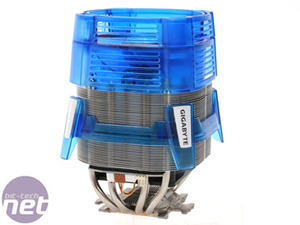
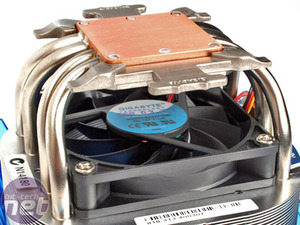
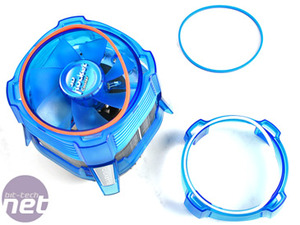
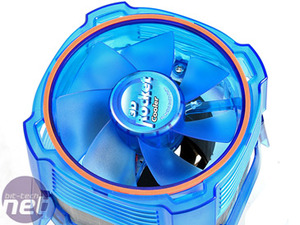
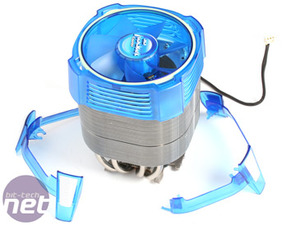
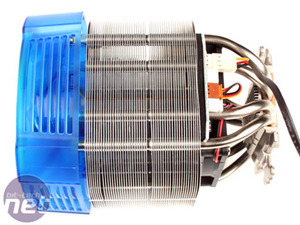







Want to comment? Please log in.